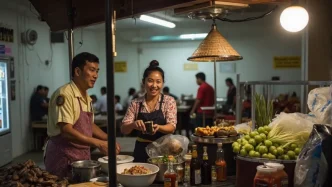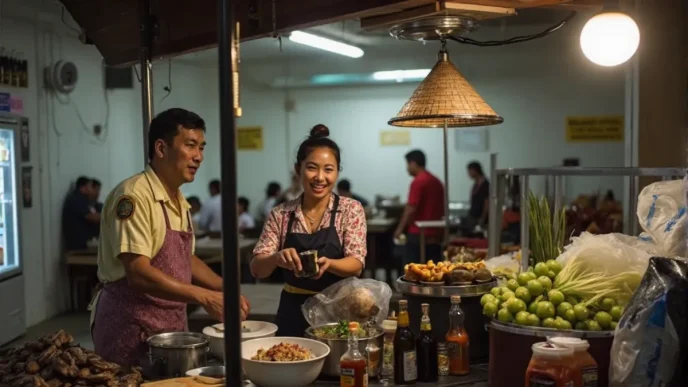Thailand has escalated its efforts to combat the spread of avian influenza, broadening its surveillance and prevention measures to include individuals exposed to dairy farms and abnormal animal deaths, in addition to those with contact with poultry. The move comes as reports confirm the detection of avian influenza A (H5N1) in mammals such as dairy cows, tigers, and pigs, raising concerns about the virus’s ability to adapt and infect a wider range of hosts.
The Department of Disease Control (DDC) has issued stark warnings against consuming raw or undercooked food, particularly raw milk, urging the public to opt for pasteurised dairy products and thoroughly cooked poultry and eggs. With Thailand sharing a porous border with Cambodia—where avian flu infections in humans have resulted in severe symptoms and a fatality rate of 40-50%—authorities are on high alert, especially in border regions with frequent cross-border travel and animal trade.
A Growing Regional Threat
The detection of H5N1 in mammals marks a troubling evolution of the virus, which has historically been associated with birds. Globally, cases of avian influenza in mammals are on the rise, and Thailand’s proximity to Cambodia, where the disease has taken a deadly toll, amplifies the risks. Cross-border movement of people and animals, often for trade, has necessitated stringent monitoring in these areas. Thai health officials are particularly concerned about the potential for human-to-human transmission, though no such cases have been confirmed in the current outbreak.
Under the One Health approach—a collaborative framework integrating human, animal, and environmental health—Thailand has established a robust surveillance system. The DDC, alongside the Department of Livestock Development and the Department of National Parks, Wildlife, and Plant Conservation, conducts regular risk assessments to monitor the spread of avian influenza in humans, animals, and wildlife. This multi-agency effort aims to detect and contain outbreaks before they escalate into broader public health crises.
The expansion of surveillance to include dairy farms and instances of abnormal animal deaths reflects a proactive stance. Previously, monitoring focused primarily on respiratory illnesses among those with direct poultry contact. Now, anyone who has interacted with potentially infected mammals or environments is under scrutiny. The DDC has notified livestock authorities of these updated measures, ensuring a coordinated response across sectors.
Public Health Warnings and Precautions
Public health advisories have been clear and urgent. “The public is advised to consume only thoroughly cooked food, especially poultry, eggs, and dairy products. Avoid consuming raw or undercooked food, particularly raw milk, and opt for pasteurised dairy products instead,” the DDC stated in a recent release. The department also cautioned against direct contact with sick or dead poultry, pigs, or dairy cattle, recommending protective measures such as wearing masks and gloves, and thorough handwashing after handling animals.
For those who may have been exposed, the guidance is unequivocal: if symptoms such as fever or respiratory distress appear within 14 days of contact with potentially infected animals, individuals should seek medical attention immediately. While visiting farms or interacting with animals is still permitted, the DDC stresses that proper precautions are non-negotiable.
The emphasis on pasteurised dairy products comes in the wake of findings that raw milk could serve as a transmission vector for H5N1, especially given its detection in dairy cows. This has prompted a reevaluation of food safety practices, particularly in rural areas where raw milk consumption may be more common. Authorities are working to raise awareness about the risks, targeting communities near farms and border regions where exposure risks are higher.
Thailand’s Broader Context in Disease Control
Thailand’s response to avian influenza must be viewed within the context of its history with zoonotic diseases. The country has faced significant outbreaks of H5N1 in the past, particularly in the early 2000s, when it was among the hardest-hit nations in South East Asia. Those outbreaks led to dozens of human cases and fatalities, spurring the development of robust surveillance and response mechanisms. Lessons learned from that period have informed current strategies, including rapid response teams, public education campaigns, and international collaboration.
The current outbreak, however, introduces new challenges. The adaptation of H5N1 to mammals suggests a potential shift in the virus’s behaviour, raising questions about its future trajectory. While there is no confirmed evidence of sustained human-to-human transmission, the high fatality rate in Cambodia serves as a grim reminder of the stakes involved. If the virus were to develop such capabilities—a scenario health experts are monitoring closely—the implications for global public health could be severe.
Thailand’s border with Cambodia adds another layer of complexity. The two countries share deep economic and cultural ties, with daily movement of goods, livestock, and people. Informal trade routes, often unregulated, pose particular challenges for disease control. Thai authorities have stepped up inspections at border checkpoints, but the vast and porous nature of the frontier makes complete containment difficult. Collaboration with Cambodian counterparts is underway, though limited resources on both sides may hinder comprehensive joint efforts.
Analysis: Balancing Vigilance and Normalcy
Thailand’s expanded surveillance measures reflect a delicate balance between vigilance and maintaining normalcy. While the threat of avian influenza is real, overreacting could disrupt agricultural economies and tourism, both critical to the country’s livelihood. Dairy and poultry industries, already under strain from global supply chain issues, face additional pressure as public confidence in their products wavers. The DDC’s emphasis on safe consumption practices aims to mitigate these concerns, ensuring that economic impacts are minimised while public health remains the priority.
Speculatively, if H5N1 cases in mammals continue to rise, Thailand may need to consider more drastic measures, such as temporary bans on raw dairy sales or stricter farm regulations. However, no evidence currently supports the need for such steps, and any policy changes would require careful consideration of economic and social impacts. For now, the focus remains on education and prevention, with authorities hopeful that heightened awareness will curb potential outbreaks.
The regional dimension cannot be ignored. Cambodia’s high fatality rate underscores the importance of cross-border cooperation, but political and logistical barriers may complicate these efforts. If infections in Cambodia spike further, Thailand could face increased pressure on its health systems, particularly in border provinces. While no such surge has been confirmed, the possibility warrants contingency planning, a process already underway through the One Health framework.
Looking Ahead: A Call for Sustained Action
As Thailand navigates this evolving threat, sustained action will be key. Public compliance with health advisories, particularly in rural and border areas, will determine the success of current measures. At the same time, ongoing research into H5N1’s adaptation to mammals is critical. Thai health officials are collaborating with international bodies to monitor genetic changes in the virus, though results remain preliminary.
For the average Thai resident, the message is one of caution but not panic. Simple steps—cooking food thoroughly, avoiding contact with sick animals, and seeking prompt medical care—can significantly reduce risks. The government’s proactive stance, coupled with its experience in managing past outbreaks, provides a foundation for confidence, even as uncertainties linger.
Thailand’s fight against avian influenza is emblematic of broader regional and global challenges in managing zoonotic diseases. As climate change and human encroachment on wildlife habitats continue to drive such outbreaks, the need for integrated, cross-border solutions becomes ever more apparent. For now, Thailand stands as a frontline defender, its surveillance systems a critical bulwark against a virus that respects no borders.














